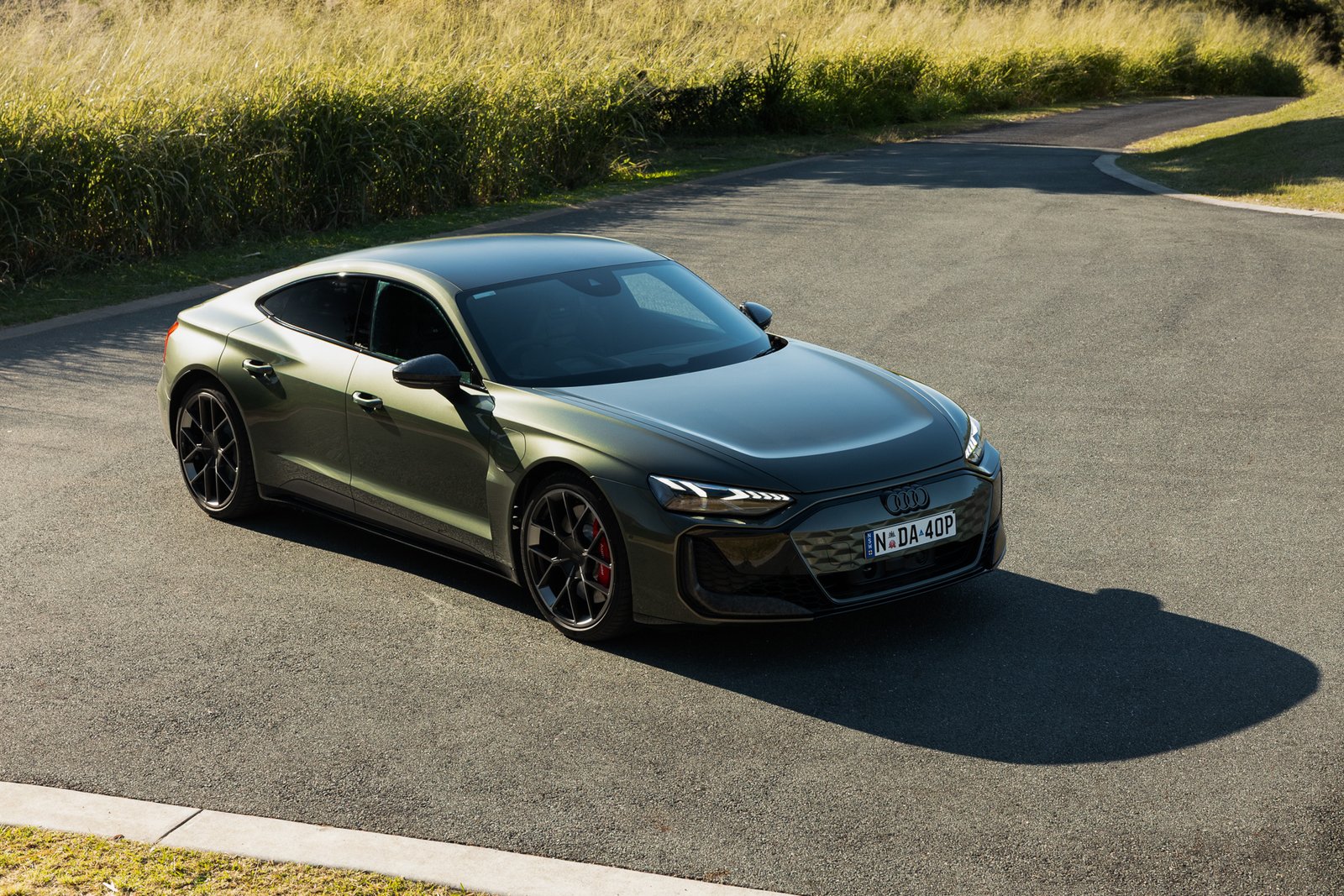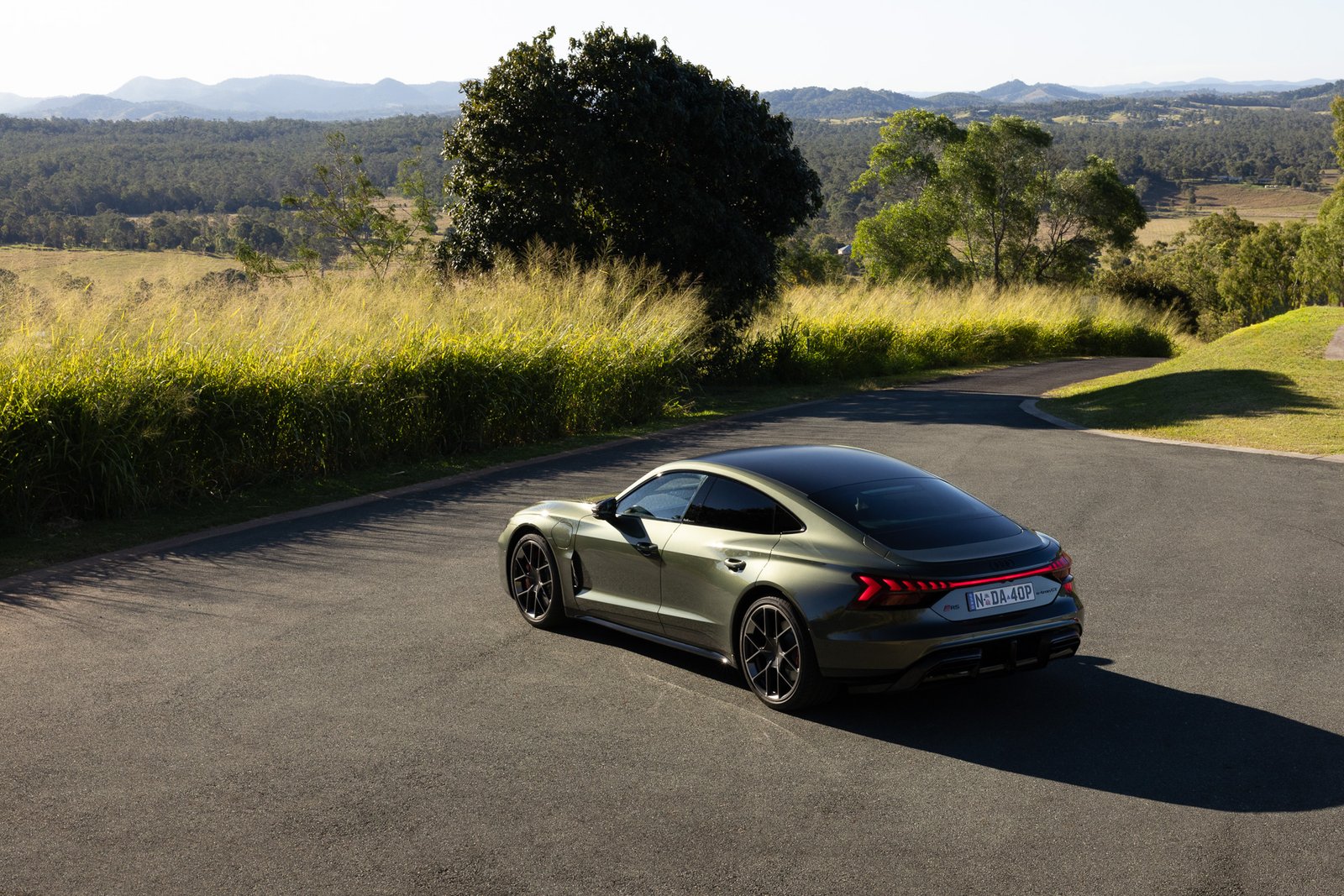Design
You don’t need to be a car person to notice an RS. That’s always been part of their magic. These are machines designed to carry their power in the shape of their shoulders, the depth of their grille, the tension in their wheel arches.
The RS Q8 performance makes its presence known from the moment you clock it. There’s a physicality to it, a sheer mass that feels impossible to ignore. It wears its weight like armor, sitting high but not soft, with sharp creases and that signature Singleframe grille pulling the nose low to the ground. The 23-inch forged alloys fill the arches like they were sculpted in place. Up close, it feels less like an SUV and more like a road-going siege weapon.
The RS e-tron GT performance tells a different story. Lower. Smoother. Less aggression, more precision. It doesn’t puff itself up or try to dominate space. It just slices through it. The bodywork is taut, like it’s been vacuum-sealed over the chassis. The lines are clean and aerodynamic without becoming clinical. Subtle flares at the rear. A diffuser that actually works. Lighting signatures that shift as you approach. If the Q8 is muscle, the GT is muscle memory.
But both cars share a confidence that comes not from trying to be seen, but from knowing they will be. Even in motion, you notice how they carry themselves differently. The Q8 strides. The GT glides.
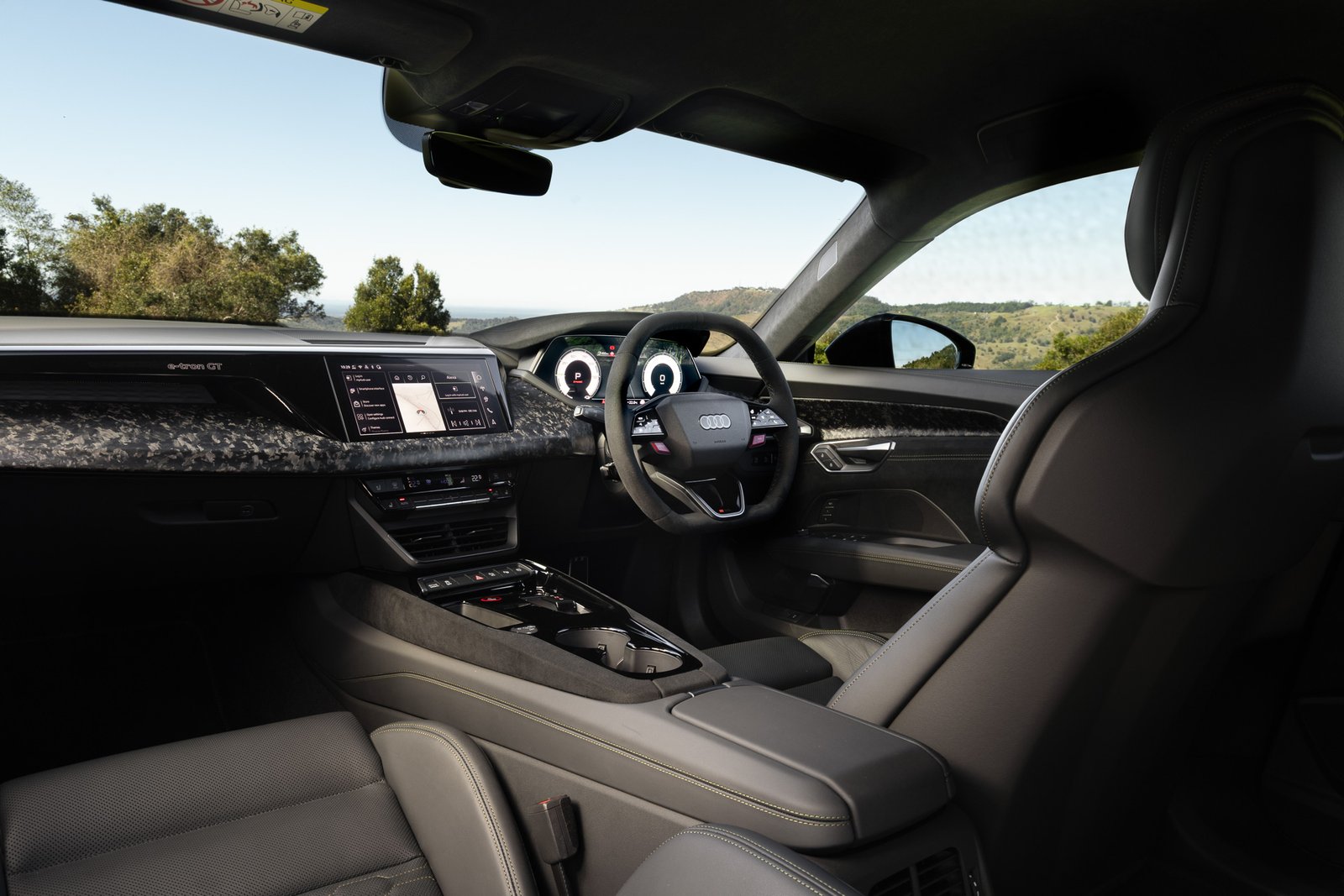
Inside, that duality continues. The RS Q8 gives you height, a commanding view, and the sense that you’re driving something enormous yet intentional. Materials are rich and reassuring. Valcona leather, brushed aluminum, ambient lighting used with restraint. Everything is engineered to make you feel important without tipping into excess. You get twin touchscreens for climate and media, a crystal-clear RS-specific digital cluster, and a Bang & Olufsen sound system with 17 speakers and 730 watts. Add in massage seats and soft-close doors and it becomes the kind of space that could just as easily carry five adults to dinner as blast down a backroad.
The RS e-tron GT performance, by contrast, cocoons you. The driving position is low and focused, the dashboard wrapped tightly around the driver like a grand tourer’s shell. The screens feel carved from dark glass. Controls fall easily to hand, but never overwhelm. The 12.3-inch virtual cockpit is razor-sharp, and the MMI system is responsive without trying too hard to impress. Wireless CarPlay and Android Auto integrate cleanly, and the sound — again from Bang & Olufsen — is layered and cinematic.
What stands out most, though, is what you don’t hear. There’s an eerie silence to the cabin, even at speed. Acoustic glass, low drag, tight seals. It all adds up to a kind of stillness that makes even low-volume music feel immersive. It’s the kind of environment that rewards long drives. That allows you to think.
There are clever details throughout; a panoramic roof with switchable transparency, climate pre-conditioning via your phone, charging info baked into the interface, but none of it feels like tech for tech’s sake. It’s all in service of a smoother, smarter experience.
And then there’s the RS-ness of it all. From the embossed logos on the seats to the contrast stitching, the flat-bottom steering wheels, and RS-specific drive modes, there’s a shared DNA. A shared sense of theatre. In the Q8, it’s confident and composed. In the GT, it’s tight and focused. Different postures, same intent.
These are cars that turn heads from the outside and engage the senses from within. One shouts with its size. The other hums with purpose. Both leave an impression.
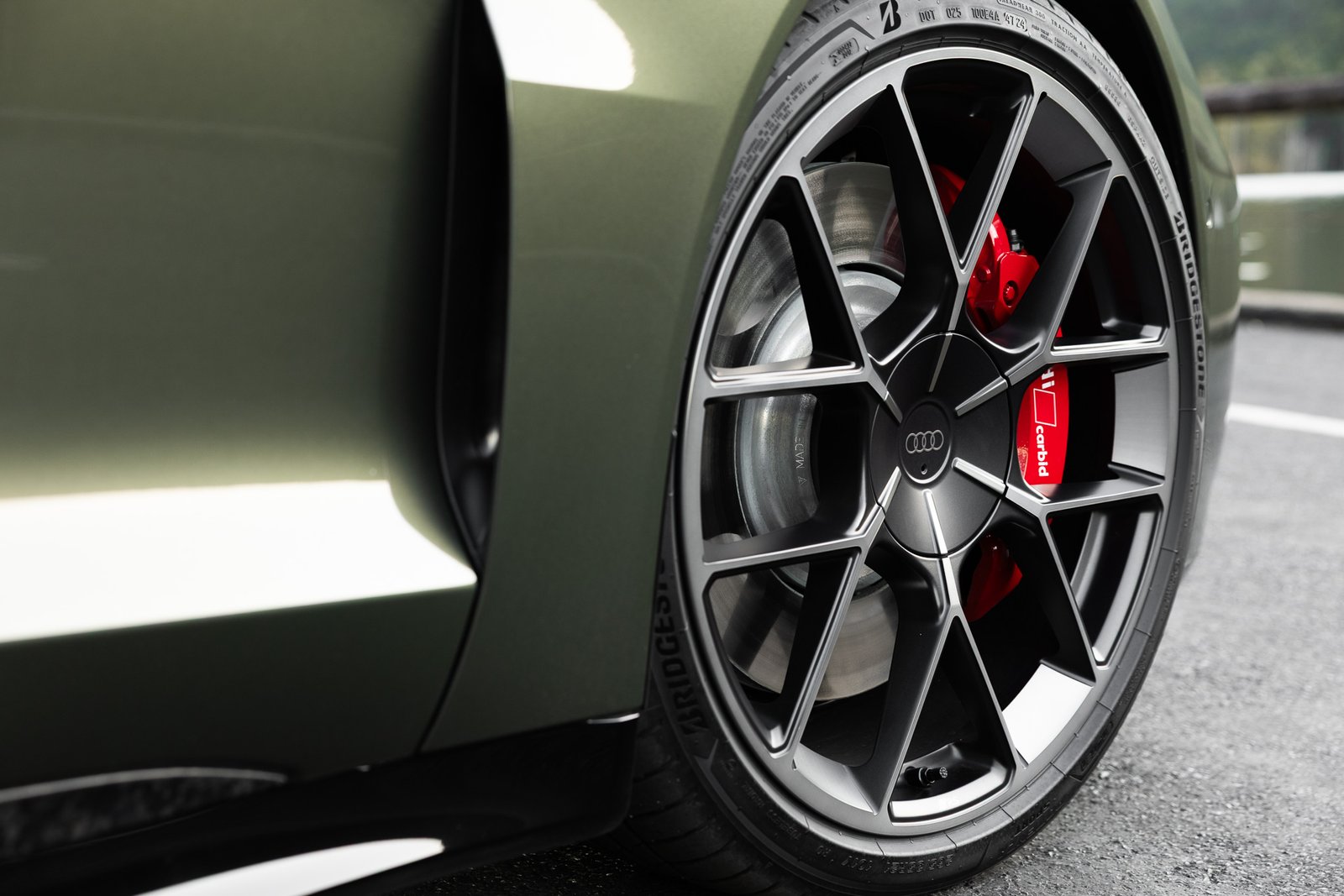
Performance
You learn a lot about a car when you accelerate hard in a straight line. But you learn even more in the split second before you do.
In the RS Q8 performance, that moment is all tension. The engine growls, waiting to be unleashed. Your right foot hovers, sensing the weight of 471 kilowatts and 850 newton-metres of torque ready to hurl 2.3 tonnes of SUV toward the horizon. It’s not just quick for its size. It’s quick, full stop. Zero to one hundred in 3.6 seconds. That would have made it a supercar not long ago. Now it’s your family hauler, towing 3.5 tonnes if you need it to.
The drama is mechanical. It comes from deep within. You feel the shifts. You hear the explosions. The mild hybrid system smooths out the edges, but this is still a car that wants to be driven hard, loudly, and often. The all-wheel steering tightens the experience, making something this large feel improbably agile. Active roll stabilisation keeps things flat, while the sport differential shuffles torque to whichever wheel needs it most. It’s a system that feels alive, constantly adjusting, giving the car a sharpness you wouldn’t expect from something so big.
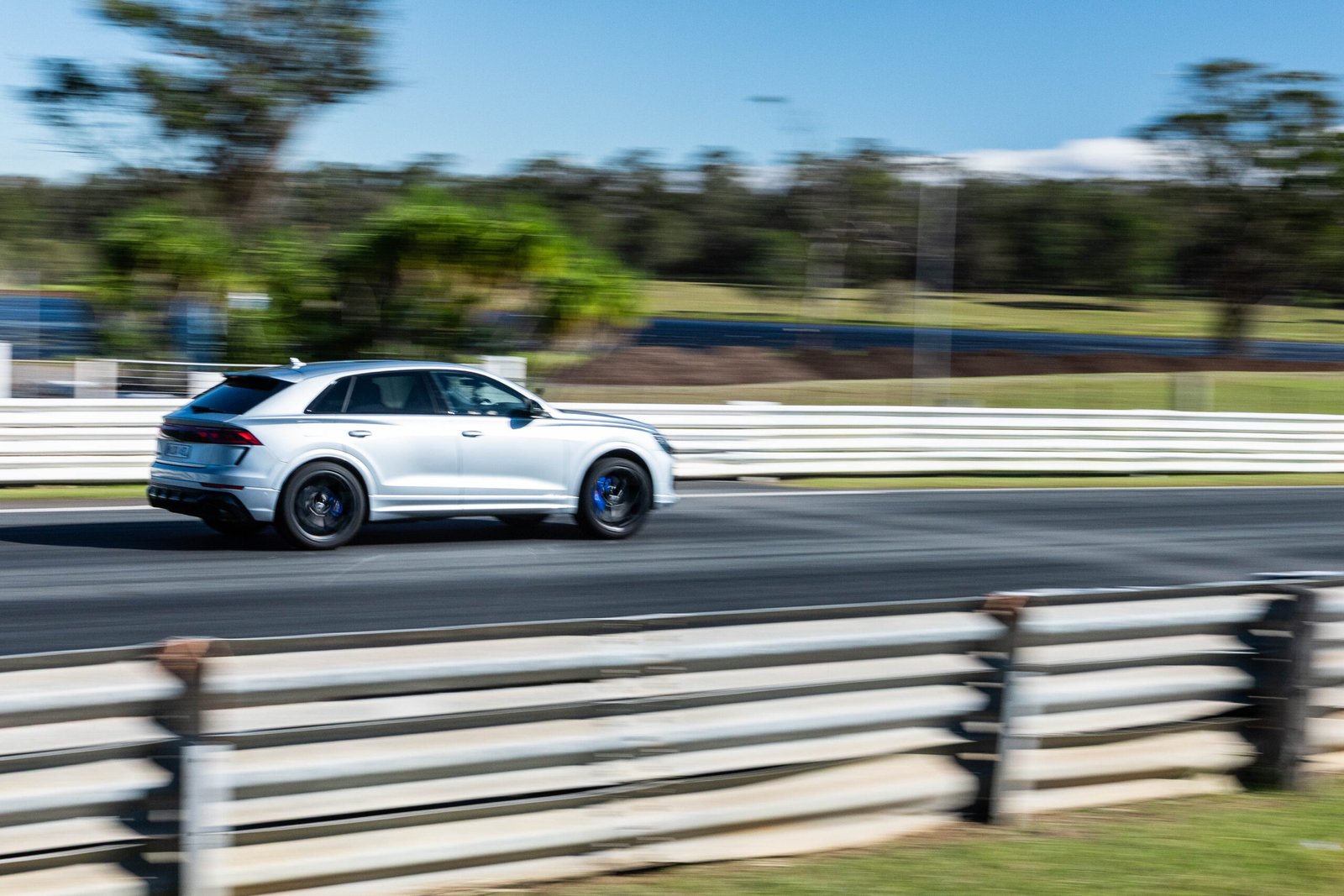
The RS e-tron GT performance is a different kind of tension. It doesn’t build. It just releases.
There’s no sound. No sense of readiness. Just you and 680 kilowatts of instant thrust. One moment you’re at a standstill, the next your stomach is somewhere behind you and your brain is still catching up. The launch feels more like being pulled than pushed. There is no lag, no hesitation. Just full force, immediately.
Numbers only tell part of the story, but they help. Zero to one hundred in 2.5 seconds. Torque at 1,027 newton-metres. Braking recuperation of up to 400 kilowatts. A dual-motor setup that sends power to all four wheels with absolute clarity. But what defines the GT isn’t the data. It’s the silence. The stillness. The sense that you’re not driving a fast car, but experiencing a different relationship with motion altogether.
Where the Q8 rumbles and repositions itself through corners, the e-tron GT flows. The weight is still there, but masked by a lower centre of gravity and active suspension that can individually adjust each damper in real time. It compensates for pitch under braking, for roll through corners, and for squat under acceleration. It feels neutral. Planted. Unbothered.
And yet, it still feels like an RS. There’s a performance mode that sharpens the steering, stiffens the chassis, and even pipes in an artificial sound tuned specifically for the car. It’s not trying to mimic a combustion engine. It’s doing something else. Something appropriate for its nature. Something new.
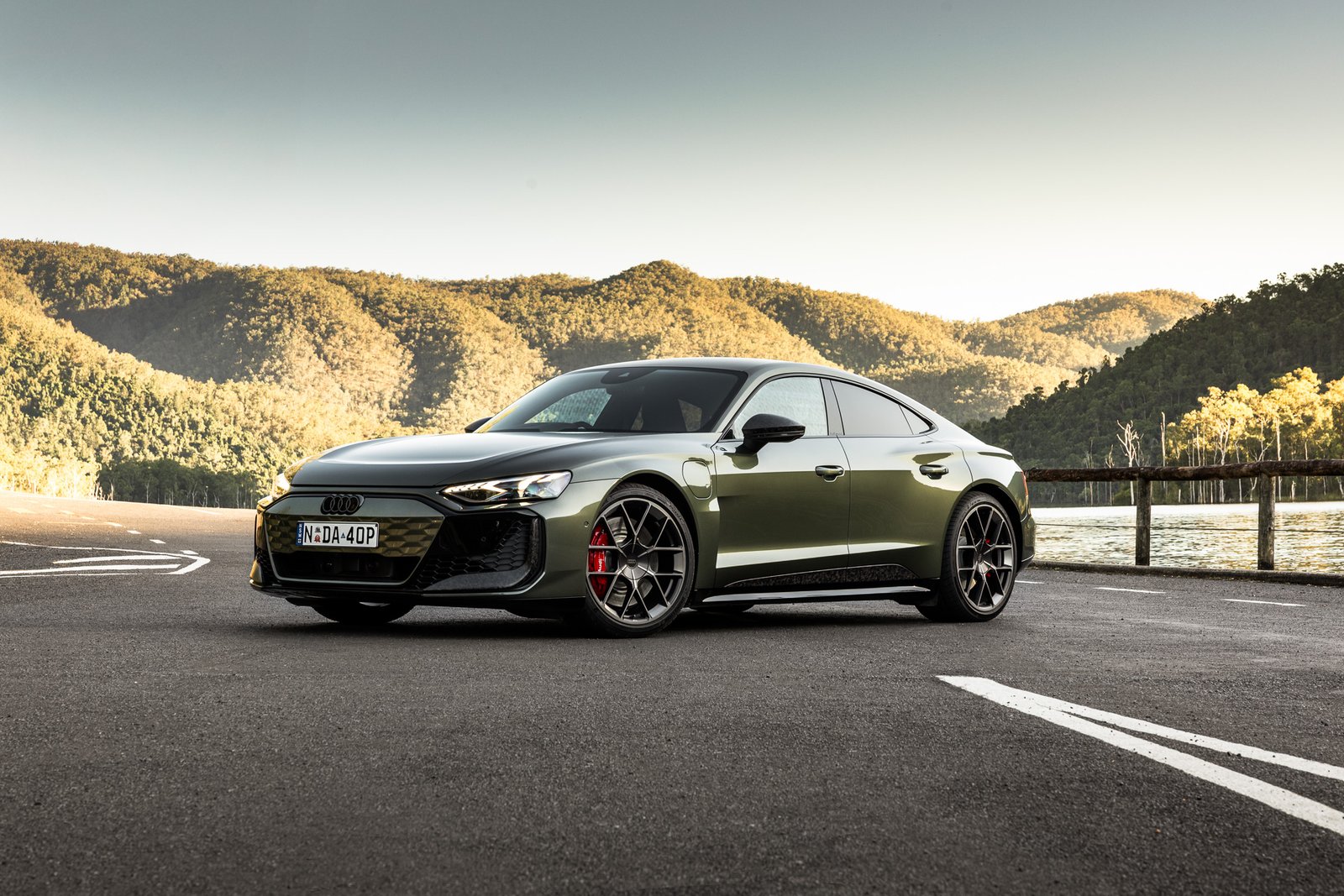 There are few badges in the automotive world that hold as much emotional weight as Audi’s RS. For decades, these two letters have stood for a kind of controlled ferocity. Cars that aren’t just fast, but focused. Capable of launching you down a mountain pass or up a motorway on-ramp with equal ease. Always precise. Always composed. And always just a little bit unhinged beneath the surface.
There are few badges in the automotive world that hold as much emotional weight as Audi’s RS. For decades, these two letters have stood for a kind of controlled ferocity. Cars that aren’t just fast, but focused. Capable of launching you down a mountain pass or up a motorway on-ramp with equal ease. Always precise. Always composed. And always just a little bit unhinged beneath the surface.

